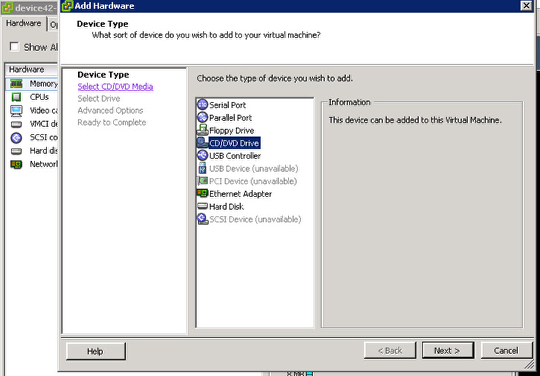Serial Port Xenserver

Mar 31, 2014 - Basicly you configure Xen and/or Linux kernel to write the boot and console messages to a serial port as text. Then you setup a cable (or nowadays IP connection) between the Xen server and for example a laptop. Xen Serial Console. Jump to: navigation. Basicly you configure Xen and/or Linux kernel to write the boot and console messages to a serial port as text.

It's probably too late for you, but your question could be of general interest. If your serial port (or USB port or whatever) can be identified as PCI device, you can avoid XS to take into control that device and let manage it by guest OS. • lspci to list devices and choose which one represents your serial port, in the following example the serial port PCI id is 02:00.0 01:00.0 RAID bus controller: LSI Logic / Symbios Logic MegaRAID SAS 2108 [Liberator] (rev 05) 02:00.0 Serial controller: MosChip Semiconductor Technology Ltd. PCIe 9922 Multi-I/O Controller 05:00.0 USB controller: Renesas Technology Corp. UPD720202 USB 3.0 Host Controller (rev 02) • edit the /boot/extlinux.conf and look for 'label xe' line, that identifies your boot default configuration; on the row beginning with 'append /boot.' , there are parameters; after 'splash' add another parameter as 'pciback.hide=(02.00.0)', where you should put in parenthesis the same PCI id you had found before. If the PCI devices you want to pass to guest are multiple, list them each one enclosed in parenthesis, separated by blanks, as in the example.
Label xe # XenServer kernel mboot.c32 append /boot/xen.gz mem=1024G dom0_max_vcpus=4 dom0_mem=752M,max:752M watchdog_timeout=300 lowmem_emergency_pool=1M crashkernel=64M@32M cpuid_mask_xsave_eax=0 console=vga vga=mode-0x0311 --- /boot/vmlinuz-2.6-xen root=LABEL=root-mvyxdjwc ro xencons=hvc console=hvc0 console=tty0 quiet vga=785 splash pciback.hide=(05:00.0) (02:00.0) (00:1d.0) --- /boot/initrd-2. Pes 2008 Free Download Full Version For Pc Windows 7. 6-xen.img • Save the file, issue the extlinux -i /boot command and reboot your server. • Now you should assign the PCI device(s) to the VM you want to manage them. Although there are more ways to get the UUID of a VM, you can list them all with xe vm-list command and choose the right one from the resulting list. In the example the wanted UUID is a82769ff-9dc4-56bb-61f9-57d741162a14 uuid ( RO): a82769ff-9dc4-56bb-61f9-57d741162a14 name-label ( RW): sersrv03.xyz.lan power-state ( RO): running • And finally, the command that tells the VM to take into direct charge the PCI device(s) is the following, where you put the UUID of the wanted VM and the PCI id's of the PCI devices. In the example, there are two PCI devices listed, separated by comma. Xe vm-param-set other-config:pci=0/0000:02:00.0,0/0000:00:1d.0 uuid=a82769ff-9dc4-56bb-61f9-57d741162a14 • Start the relevant VM and check if the new hardware is correctly detected. This method comes from, thanks to sotech for sharing.
Notes • Of course your device will be tied to a specific VM. • If your application depends on that specific PCI device, forget moving the VM elsewhere. Installrite Tutorial. Download Hd Loader Ps2 Fat 2005 more. • If your device is not listed as PCI, you are out of luck. • Not all devices are suitable to be managed this way. I had my bad time with an USB controlled UPS, that refused to be managed with this sort of passthrough.
• I agree that TomTom's suggestion is the most general and canonical way to solve the problem with a serial port.
Thats probably not a hi demand item now that serial ports are a thing of the past (Finally!). No more baud rates. Anyway, if you have a serial device and you are wanting to use it with XenDesktop try one of those seial to usb converters and pass it through with the USB support.